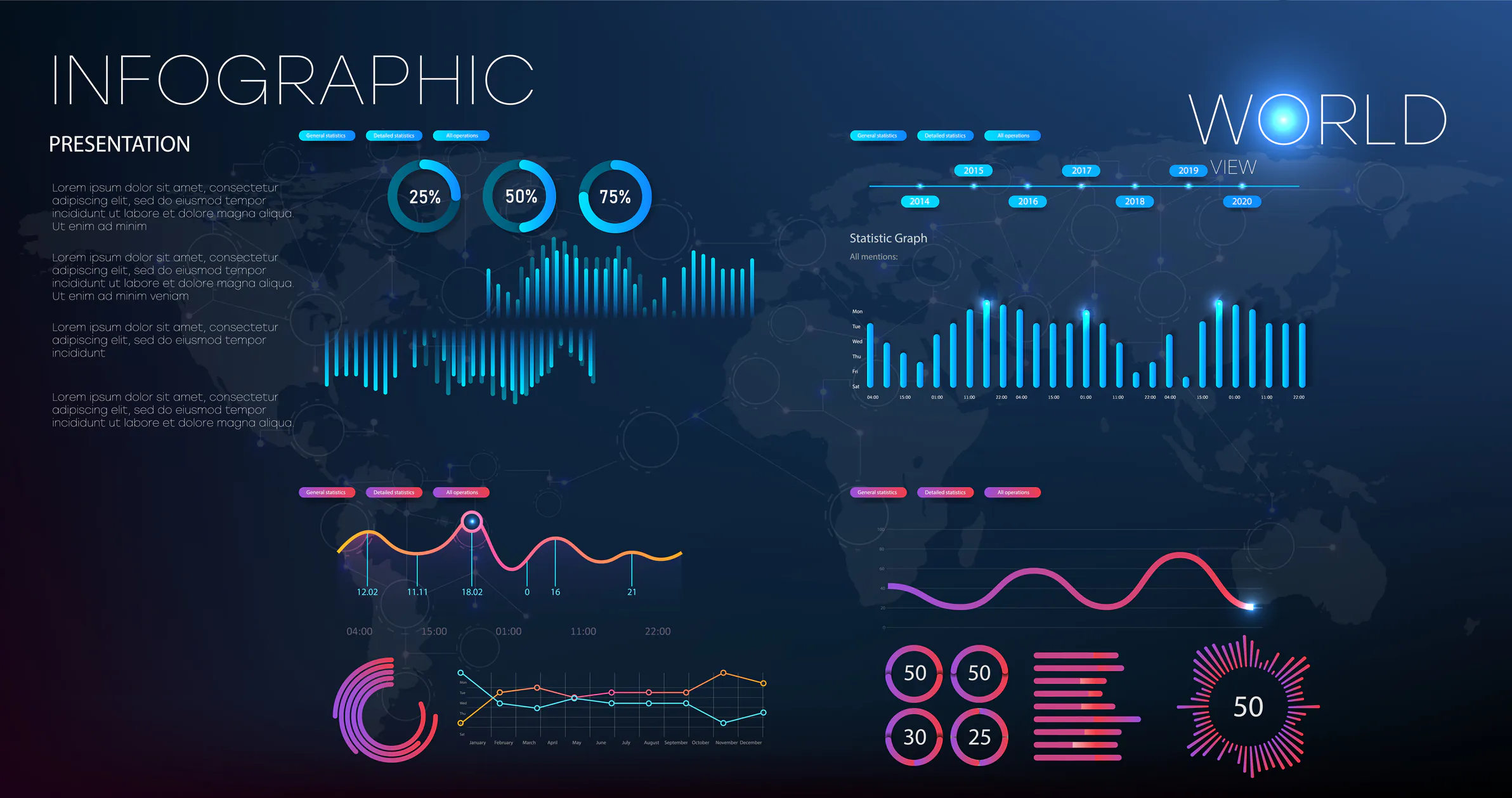Written By: Sudeshna Ghosh
Nowadays, customer analytics have become pivotal in understanding customer behavior, enhancing customer experience, and ultimately driving customer satisfaction. In the fiercely competitive landscape, businesses are leveraging cutting-edge AI-driven methodologies and sophisticated analytics tools to gather comprehensive insights into customer behaviors, preferences, and sentiments. From data collection at various touchpoints to employing advanced predictive algorithms, businesses are able to anticipate purchase decisions and tailor pricing/promotion strategies accordingly. Additionally, insights derived from key driver analysis and descriptive analytics inform strategic product planning and efficient merchandising.
By integrating predictive analytics and prescriptive analytics into their operations, companies can optimize point-of-sale (POS) systems and Diagnostic Analytics to streamline inventory management systems, and enhance customer relationship management (CRM) software. These tools empower businesses to deliver personalized experiences, optimize pricing/promotion strategies, and improve overall customer satisfaction.
To stay competitive, it’s essential for businesses to monitor key performance indicators (KPIs), adapt swiftly to market trends, and continuously refine their strategies based on insights derived from customer analytics. By embracing a data-driven approach and leveraging the latest business intelligence tools, companies can stay ahead of the curve and drive sustained growth in the dynamic retail landscape. Unlock the secrets behind the success of leading retail organizations in the USA with our comprehensive guide on the top customer analytics solutions driving transformative results. So, don’t miss out on the insights that can propel your retail business to new heights – read on and revolutionize your approach today!
Book a demo to experience the meaningful insights we derive from data through our customer analytics tools and platform capabilities. Schedule a demo today!
Request a Free DemoTable of Contents
What exactly does customer analytics do to your retail business?
In today’s rapidly evolving retail landscape, understanding the intricacies of customer behavior and optimizing customer experience are paramount to achieving sustainable success. This is where customer analytics steps in as a powerful tool, revolutionizing the way businesses interact with their clientele. By harnessing advanced AI-driven methodologies and employing a spectrum of analytical techniques, including predictive algorithms, descriptive analytics, Predictive Analytics, diagnostic analytics, and prescriptive analytics, companies can delve deep into the nuances of consumer preferences and tendencies.
From the moment a customer interacts with a brand to the point of making a purchase decision, every touchpoint holds valuable data. Through meticulous data collection processes, businesses can amass a treasure trove of information that sheds light on purchase decisions, pricing/promotion strategies, and even product planning. This wealth of data, when analyzed comprehensively, unveils insights crucial for refining merchandising approaches and enhancing overall customer satisfaction.
Furthermore, customer analytics enables businesses to optimize operational efficiency and derive Key Driver Analysis by integrating seamlessly with essential systems like point-of-sale (POS) systems, customer relationship management (CRM) software, and inventory management systems. By leveraging these technologies alongside business intelligence tools, companies can identify key performance indicators (KPIs), empowering them to make data-driven decisions that drive growth and foster long-term success.
In this introductory exploration, we delve into the transformative impact of customer analytics on retail businesses, unraveling its myriad benefits and showcasing how it serves as the linchpin in navigating today’s dynamic market landscape. Join us as we uncover the answer to the question: What exactly does customer analytics do to your retail business?

Customer analytics is known as data-driven insights into customer behavior that most retailers use to significantly improve their business activities and drive profitability. These tools can optimize pricing/promotion, test marketing campaigns, inform store layout, and provide personalized recommendations. In the dynamic retail industry, retailers can make detailed data collection plans to completely benefit from customer analytics, and then, their key stakeholders can operationalize that information.
Retail customer analytics is the process of analyzing customer data to gain insights and make informed business decisions in the retail industry. It involves collecting and analyzing data from various sources such as sales transactions, loyalty programs, social media, and website interactions. To achieve this, retailers utilize AI-driven methodologies, business intelligence tools, and customer relationship management (CRM) software. Through techniques like predictive algorithms and descriptive analytics, they can understand customer satisfaction and purchase decisions better, aiding in product planning, merchandising, and optimizing inventory management systems. By leveraging point-of-sale (POS) systems and conducting key driver analysis based on key performance indicators (KPIs), retailers can implement prescriptive analytics, Diagnostic Analytics, and Predictive Analytics to enhance the customer experience and drive overall business success.
The goal of retail customer analytics is to understand customer behavior, preferences, and trends to optimize marketing strategies and improve customer satisfaction. Through customer analytics, retailers can identify patterns and trends, segment customers into different groups, and personalize marketing campaigns accordingly. Retailers use data-driven insights from customer analytics to enhance product offerings, optimize pricing strategies, improve inventory management, and provide a better overall shopping experience for customers. Retail buyers can leverage metrics such as company, customer spend, loyalty, basket size, average spend, brand preference, and advertising engagement to capitalize on sales and marketing opportunities both in-store and online. Techniques like implicit association testing help companies understand customer preferences on a deeper level. For instance, a home interior retailer might use customer analytics to gauge interest in their range of products, tailor pricing, and create enticing special offers for their marketplace.
This platform represents a dataset revealing customers’ actions and motivations, encompassing details such as shopping locations, reasons behind store visits, specific purchases, and the factors impacting their buying choices. Various metrics, including customer satisfaction, loyalty, basket size, average expenditure, brand preferences, and advertising engagement, offer a comprehensive overview. By examining these metrics, customer analytics provide a holistic perspective of the retail environment, offering valuable insights into customers’ perspectives and unveiling untapped sales and marketing possibilities. Behavior patterns and customer motivations are deciphered through the purchase journey, shedding light on impulse purchases and personalized shopping experiences. Store layout and seasonal activity influence behavioral data, contributing to marketing strategies and operational efficiency. Moreover, qualitative data and quantitative data blend to define customer segments and refine point of sale strategies. From website layout to identity data, this platform integrates diverse elements, including signage, Average order value and needs to optimize the supply chain and enhance the descriptive data available for analysis.
Our analytics experts will help you to know how customer analytics is changing the retail industry landscape- a must-read for retailers ready to embrace the next generation of customer analytics.
What are the types of data crucial to retail analytics?

In the realm of US retail, understanding customer behaviours through analytics is crucial. Before delving into research, it’s essential to determine the data collection methods and the types of datasets necessary for informed business decisions and increased profits.
For comprehensive insights, it’s important to decide whether a large sample, surveyed for various aspects of the business, is needed or if understanding customer actions and demographics is the primary focus. Utilizing methods like Point-of-Sale for in-store data and survey research for direct consumer interaction can provide rich datasets for answering these crucial questions.
By employing survey methods such as quantilope and survey templates, retailers can gather detailed information about shopping trends, customer loyalty, and purchasing patterns. This data, along with internal sources and external repositories, can be analyzed using retail analytics tools to optimize inventory management, marketing efforts, and product allocations.
To enhance decision-making, techniques like MaxDiff, Price Sensitivity Meter, and A/B Testing can be applied to understand customer sentiments and price sensitivity. Additionally, incorporating AI solutions for video research and emotion analysis such as inColor can provide deeper insights and Keywords into customer emotions and store layouts.
In summary, leveraging data analytics in both e-commerce and brick-and-mortar environments is crucial for retailers to stay competitive, adapt to shopping trends, analysis and reporting, video research solution, and enhance customer loyalty. By harnessing the power of retail analytics, businesses can make informed decisions to optimize their operations and drive increased profits. Utilizing machine learning algorithms, retailers can analyze customer purchase histories and customer demographics to predict future trends and personalize marketing efforts. Visualizations and business intelligence reports provide insights into demand forecasting and sales forecasting, enabling retailers to allocate resources effectively. Additionally, in-store video feeds and location tracking data help retailers understand customer behavior and optimize store layouts. Cloud services and Examples of Analytics like Oracle Retail facilitate seamless integration and analysis of data across various platforms, enhancing customer engagement and overall business performance.
Here are four data source types vital for robust retail analytics:
• Qualitative Data:
Qualitative research delves into the quality of responses, offering deep insights into consumer attitudes through discussions, focus groups, video surveys, or ethnographic observations. This method provides anecdotal evidence of customer behaviors, allowing retailers to visualize thought processes and motivations behind the customer journey.
• Quantitative Data:
Quantitative methods aggregate numerical metrics from consumers, visualizing key takeaways in chart form. While not as in-depth as qualitative data for individual respondents, quantitative data, presented in charts such as bar charts or pie charts and others, allows brands to confidently identify trends and cut data by various groups of interest.
• Identity Data:
Fundamental to retail, identity data includes demographic information such as gender, age, location, income level, household size, and relationship status. Crucial for logistics and maintaining updated customer databases, identity data aids in segmentation and pattern identification, considering factors like generational differences or locality.
• Behavioral Data:
Focusing on customer actions, behavioural data unveils patterns like shopping frequency, online vs. in-person visits, website interactions, and spending habits. Consumer trackers, and ongoing research programs tracking behaviours changes over time, prove invaluable in understanding fluctuations tied to consumer needs, societal events, or marketing activities.
• Descriptive Data:
Reflecting consumer behaviors without requiring comments, descriptive data is collected at the point of sale or through digital methods. This raw data, categorized by consumer type, forms actionable segments for targeted marketing efforts.
Incorporating these data types into retail analytics strategies equips US brands to glean comprehensive insights, tailor marketing approaches, and stay ahead in the competitive retail landscape.
Experience the advantages firsthand by testing a customized complimentary pilot designed to address your specific customer analytics requirements. Pilot studies are non-committal in nature.
Talk with our experts nowWhy are customer analytics important for retail?
In the realm of US retail, customer analytics plays a pivotal role in comprehending customer behaviours. For any company aspiring to meet customer demands and expand its business footprint, prioritizing the understanding of retail customers through market research is paramount. Focused on deciphering what influences customers to choose a particular channel or brand and what motivates them to increase spending, this insight becomes the cornerstone of strategic marketing and sales initiatives. For Instance, without a clear understanding of these dynamics, marketing and sales efforts become a speculative endeavor, relying solely on intuition rather than data-driven precision.
Here are some key advantages of investing in retail customer analytics for your US retail brand:
• Boost Average Order Value:
Understanding the factors that drive higher spending and identifying potential obstacles in the purchase journey is crucial for a retail business. Recognizing customer attitudes and individual circumstances enables retailers to respond with targeted marketing strategies. Additionally, retailer-specific aspects like website layout, business name, store arrangement, and pricing/promotion can be optimized based on customer responses, allowing businesses to plan offers and merchandise inventories strategically. For example, the knowledge that customers tend to spend more post-payday or that certain products are sought during specific seasons allows retailers to plan promotions effectively and bundle complementary items to maximize sales opportunities.
• Enhance Operational Efficiency:
Profit growth in retail goes beyond increased consumer spending; it also hinges on an efficiently run business. Retail customer analytics empowers retailers to understand shopping patterns, direct marketing spending effectively, and optimize the supply chain. By aligning stocking activities with purchase demands and organizing staffing schedules to meet peak times scale, retailers can minimize unnecessary costs and streamline operations.
• Craft Personalized Shoppers’ Experience:
A profound understanding of consumer behavior and various customer segments enables retail businesses to tailor offers to different customer types or occasions. Recognizing diverse shopping patterns allows businesses to create personalized customer journeys and content creation, increasing engagement and conversion rates. By leveraging this information, retailers can design in-store experiences that feel personalized and develop loyalty programs for mutual retailer/customer benefit.
• Measure Impulse Purchases:
Analyzing retail point-of-sale areas data provides valuable insights into customer psychology, informing product planning and merchandising strategies. Understanding whether customers entered a store with specific intentions or were swayed by in-store offers helps retailers refine product placement, style, and pricing. This information is instrumental in triggering unexpected consumer spending moments, such as impulse purchases driven by factors like promotions, store layouts, and product presentation.
Investing in retail customer analytics software equips US retail brands with the tools to optimize their operations, increase customer engagement, and capitalize on unforeseen sales opportunities, fostering sustained growth in the competitive retail landscape.
Why should retail businesses opt for Quantzig’s customer analytics services?
Nowadays, customers expect that their desirable brands will understand their individual needs and they will maintain seamless interactions with a lot of brands across platforms. Quantzig’s cutting-edge customer analytics solutions can help you trace the conversation with individual customers with the brand across platforms and recognize the next-best action to deliver another unified customer experience personalized to their preferences and needs.
Our Capabilities:
• Customer 3.0
Drive revenue uplift from all omnichannel customers by identifying and nurturing high RoI behavior customers and influencing their purchasing decisions during each phase of the sales funnel.
• Next Best Action Analytics
Discover the most effective strategy, appropriate communication platform, and optimal message to enhance cross-selling and upselling, ultimately elevating overall revenue and maximizing customer lifetime value.
• Customer Loyalty and Churn Analytics
Create personalized customer retention strategies by adapting product offerings to meet potential customer needs and incorporating insights from customers’ latest interactions with the brand.
• Customer Lifetime Value
Prioritize valuable customers and guide retention and marketing efforts through an improved understanding of customers’ potential lifetime value with the brand.
• Sentiment Analysis
Strategize the repositioning of the brand and counteract competitor activities by gaining a deeper understanding of customer sentiment and identifying their pain points.
• Dynamic Customer Segmentation
Customize marketing efforts and customer experiences by categorizing customers into groups with shared preferences, behaviors, and demographics.
Stay steps ahead in retail competition – choose Quantzig’s retail customer analytics for unparalleled insights, strategic advantage, and accelerated growth. Revolutionize your business strategy and outpace competitors with the power of data-driven decision-making.
Get started with your complimentary trial today and delve into our platform without any obligations. Explore our wide range of customized, data driven customer analytical solutions built across the analytical maturity levels.
Book a free trial nowRecent innovations in retail customer analytics and how they are utilized in the US Retail Industry:
In the fiercely competitive landscape of the United States retail sector, businesses are increasingly turning to cutting-edge innovations in customer analytics to gain a strategic edge. Here are five key innovations that are reshaping the path companies understand and engage with their customers in the US market:
• Predictive Analytics for Hyper-Personalization:
Predictive analytics is revolutionizing how retailers tailor their strategies and applications. By harnessing the power of machine learning algorithms, businesses can analyze huge amounts of historical data to forecast trends, anticipate customer preferences, get real-time data access, and optimize inventory management. This kind of innovation enables hyper-personalized marketing strategies, ensuring that customers receive tailored recommendations and promotions based on their individual behaviors and preferences.
• Artificial Intelligence (AI) and Machine Learning (ML) for Advanced Insights:
AI and ML technologies are playing a pivotal role in unraveling the complexities of customer data. Through sophisticated algorithms, businesses can gain deeper insights into customer behaviors and preferences. AI-powered chatbots and virtual assistants enhance customer interactions, providing real-time assistance and fostering a seamless customer journey. This innovation not only improves customer satisfaction but also streamlines operational efficiency.
• Sentiment Analysis for Real-Time Customer Feedback:
In the age of social media and online reviews, understanding customer sentiment is crucial. Sentiment analysis, powered by natural language processing, allows businesses to monitor and analyze customer opinions in real-time. This innovation helps companies swiftly respond to customer concerns, adapt marketing strategies, increase their bottom line, and enhance their overall brand reputation. In the US market, where consumer opinions heavily influence purchasing decisions, this innovation is particularly significant.
• Location-Based Analytics for Targeted Marketing:
Location-based analytics is a game-changer for retailers seeking to optimize their physical presence. By leveraging geospatial data, businesses gain insights into customer movement patterns, foot traffic, and regional preferences. This information proves invaluable for targeted marketing initiatives, allowing retailers to launch promotions and offers tailored to specific locations. This innovation is especially pertinent in the US market, where regional preferences can vary significantly.
• Omnichannel Integration for Unified Customer Experiences:
The rise of omnichannel retailing has prompted innovations in unified customer analytics. Business team are integrating data from various touchpoints – online and offline – to create a comprehensive view of customer interactions. This holistic approach enables retailers to provide a consistent and personalized experience across a variety of channels. In the US market, where consumers seamlessly transition between online and offline shopping, this innovation is critical for ensuring a cohesive and engaging customer journey and improvement.
These five innovations in customer analytics are propelling US retailers into a new era of customer-centric strategies. Embracing these advancements is not just a competitive advantage; it’s a necessity for businesses looking to thrive in the ever evolving and demanding US retail market.
Recent Business Reports and Statistics:

- Implementing retail customer analytics can lead to an average increase in sales of 15%.
- Approximately 80% of retailers are currently utilizing customer analytics to gain insights.
- Customer analytics can help reduce customer churn by up to 25%.
- Personalized product recommendations based on customer analytics can result in a conversion rate improvement of 20%.
- Retailers that leverage customer analytics experience an average ROI of 300%.
What are the offerings from retail analytics companies?

In the intensely competitive landscape of the United States retail sector, the demand for advanced analytics solutions has surged, driving the offerings of retail analytics companies to new heights. These companies provide a diverse range of solutions aimed at empowering retailers with actionable insights, enhancing operational efficiency, and elevating the overall customer experience.
• Predictive Analytics Solutions:
Leading retail analytics companies in the US offer predictive analytics solutions that leverage machine learning algorithms to analyze historical data and forecast future trends. This empowers retailers to anticipate customer preferences, optimize inventory management, and enhance product offerings. Predictive analytics is a strategic tool for staying ahead in the dynamic US retail market.
• Customer Segmentation and Personalization:
Retail analytics companies specialize in customer segmentation and personalization solutions. By categorizing customers based on their preferences, behaviors, and demographics, retailers can tailor marketing strategies to specific segments. This level of personalization improves customer engagement, fosters brand loyalty, and increases the likelihood of conversion – all critical factors in the US retail landscape.
• Real-Time Sentiment Analysis:
Understanding and responding to customer sentiment is paramount in the US market. Retail analytics companies offer real-time sentiment analysis solutions, leveraging natural language processing to monitor and analyze customer feedback from various channels. This allows retailers to swiftly address concerns, adapt marketing strategies, and maintain a positive brand reputation in the ever-vocal online environment.
• In-Stores Analytics for Physical Retail Optimization:
With a focus on the omnichannel retail experience, analytics companies provide in-store analytics solutions to optimize physical retail spaces. By leveraging technologies such as RFID in combination with IoT sensors, retailers gain insights into customer movement patterns, dwell times, and product interactions. This data analytics aids in refining store layouts, improving product placements, and enhancing overall in-store experiences.
• Supply Chain Analytics for Operational Excellence:
Retail analytics companies recognize the critical role of supply chain optimization in meeting consumer demands. These solutions leverage analytics to provide visibility into the supply chain, enabling retailers to streamline processes, manage inventory efficiently, and minimize disruptions. Operational excellence in the supply chain is crucial for meeting the fast-paced demands of the US retail market.
• Fraud Detection and Security Solutions:
As online transactions through smartphones continue to rise, retail analytics companies offer advanced fraud detection and security solutions. These technologies use machine learning algorithms to detect unusual patterns and flag potentially fraudulent activities. Ensuring the security of customer transactions is paramount in the US retail industry, where consumer trust is a cornerstone of success.
• Dashboards and Reporting Tools:
To empower retailers with actionable insights, analytics companies provide user-friendly dashboards and reporting tools. These tools consolidate data from various sources, offering a comprehensive view of key performance indicators. Retailers can make data-driven decisions, track the effectiveness of marketing campaigns, and continuously optimize strategies to stay competitive in the US market.
In conclusion, the offerings from retail analytics companies are diverse and tailored to address the unique challenges or issues of the US retail landscape. The dynamic landscape of the industry demands a nuanced understanding of consumer behavior, preferences, and market trends. Leveraging sophisticated analytics tools empowers retailers to glean actionable insights, optimize pricing strategies, and enhance operational efficiency. From predictive analytics to customer segmentation, sentiment analysis, in-store optimization, supply chain analytics, fraud detection, and reporting tools, these solutions collectively empower retailers to navigate the complexities of the market and drive sustained success.



